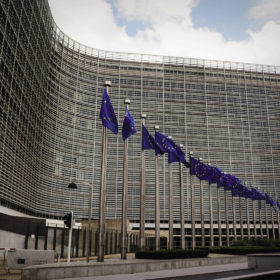A lightbulb moment for South Korea
South Korea’s Renewable Energy 3020 Implementation Plan – to hit 20% renewable energy by 2030 and 35% by 2040 – is bold but realistic. Buoyed by a rising middle class, homegrown technological excellence and a future-focused mentality, the next miracle on the Han River might well be solar-fueled, writes Hanwha Q Cells’ Ian Clover.
Interview: Shedding some light on Indonesia’s offgrid growth
Indonesia’s Central Bureau of Statistics reported in 2018 that 2,281 villages across the nation lacked access to electricity. As a vast archipelago with more than 17,000 islands, Indonesia faces serious challenges when it comes to electrification, as inter-island connection remains prohibitively expensive. Two experts in the field, Ahmad Agus Setiawan and Chayun Budiono, share their knowledge.
What broke at Oakey
With its high wholesale power prices, attractiveness to capital, wide open spaces and abundant sunshine, there is every reason to believe Australia is a PV project developer’s nirvana. However, as the wreckage at the 55 MW Oakey 2 site in Queensland reveals, challenges under the Australian sun should not be taken lightly.
BIPV: More than the module
Building integrated PV has been described as a place where uncompetitive PV products attempt to go to market. But this may be unfair, says Björn Rau, the technology manager and deputy director of PVcomB at the Helmholtz-Zentrum Berlin. Rau argues that the missing link to BIPV deployment lies at the intersection of the architectural community, construction industry, and PV manufacturers.
Rising hopes for floating PV in India
The full house at the Future PV Roundtable at this year’s Renewable Energy India Expo was evidence of the buoyant expectations for the application of floating PV in the Indian market. But with the technology still at a relatively early stage in the country, many concerns are rising to the surface.
Guilt-free solar flying?
Synthetic kerosene produced from green hydrogen promises emissions-free air travel. That sounds good – and it does not even cost that much. But there is still much more work to be done. After all, only fuel-cell airplanes can make hydrogen-powered flight truly climate-neutral, and it will take some time before these aircraft are ready for widespread use.
Waiting for the Ecodesign decision
After an extensive process and a raft of documents, the European Commission has laid the groundwork for legal measures aimed at a more sustainable solar industry. Don’t expect a revolution.
The state of solar sustainability
As part of pv magazine’s UP campaign, we asked our readers how they felt about sustainability in solar, whether they or their customers were willing to do something about it, and how they saw the conflicting goal of profitability.
Game changers
As part of the UP sustainability initiative, pv magazine has, for the first time, introduced an annual sustainability award. After much deliberation, our esteemed jurors reached their final decision. Read on to see who has been crowned 2019’s green champion.
Taking the lead
This quarter, pv magazine‘s UP Initiative focuses on lead – a toxic heavy metal that’s present in many PV technologies, and one that’s often mentioned in connection with hazardous substances across the green energy supply chain. We take a closer look at the issue and ask what it would mean for manufacturers to replace lead in their modules with more environmentally friendly materials.










